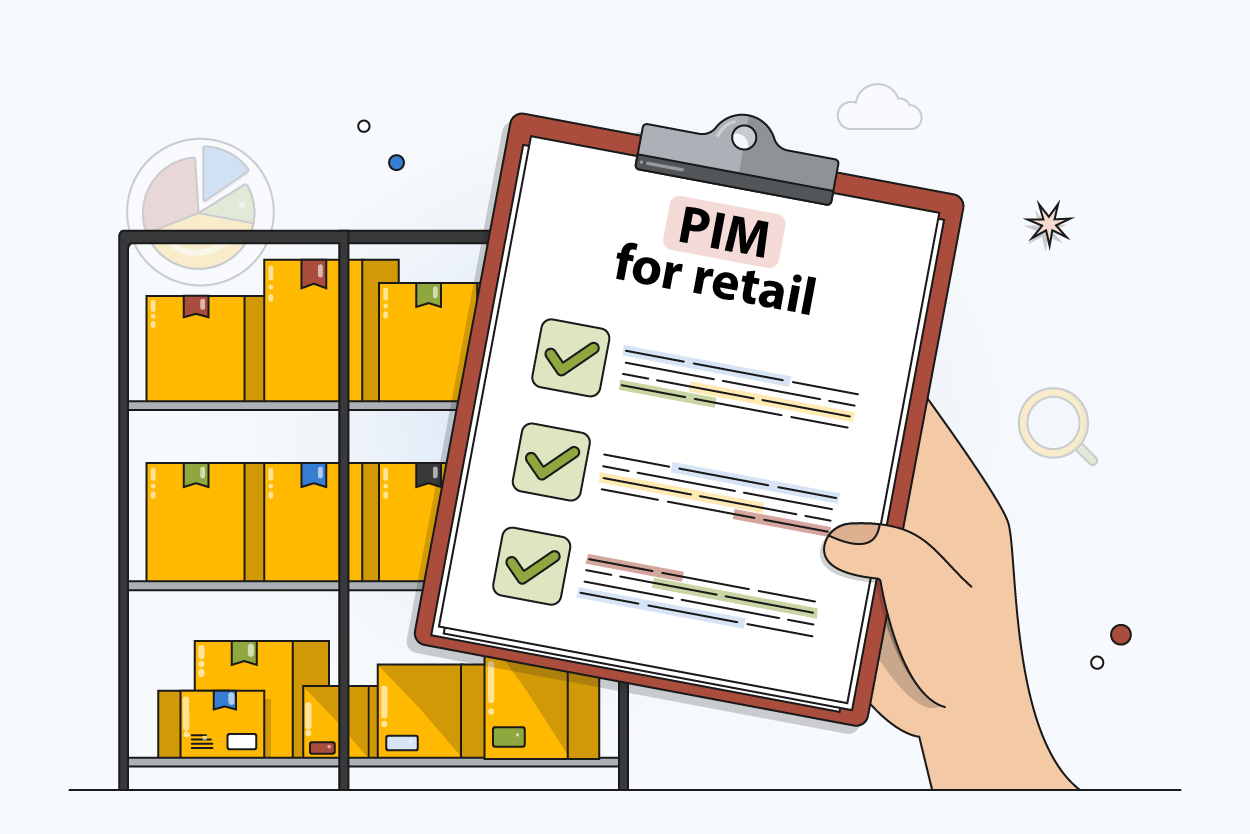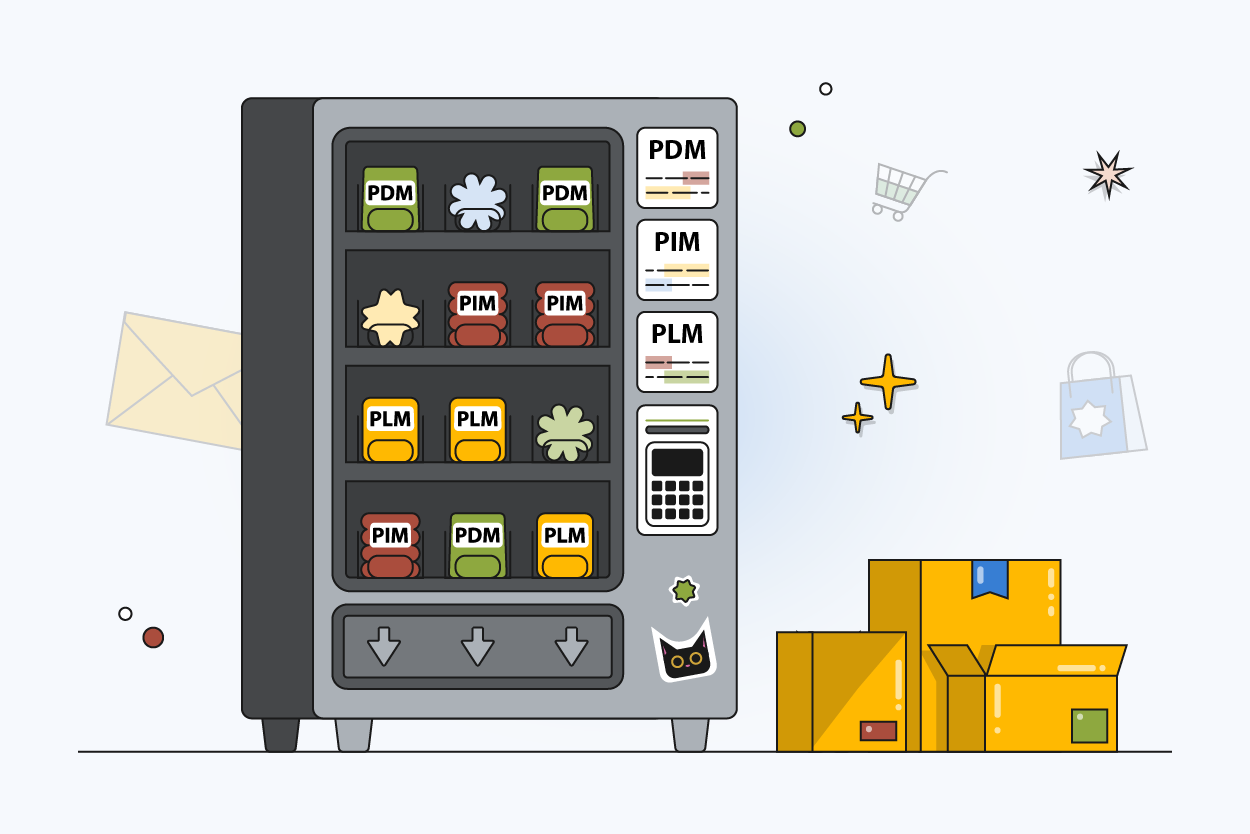How to Create a SKU: Essential Inventory Guide
Author name: Maksym Bilokon

Successful product sales is what all store owners dream about. They want their business to be successful so that the client count will rise and the number of sales will grow. Still, successful product sales can’t be achieved unless you can monitor your inventory and control your products. That’s where you need a stock-keeping unit (SKU) number, as it helps you to track all the products you have.
Once you know how to create an SKU and how to use it to track inventory it gets much easier to track and promote products in an e-commerce business and properly track sales as well as fulfill online orders. In this article, we will go through the most important reasons for creating a stock-keeping unit and explain why it’s so important for marketers.

What Is a SKU Number?
A stock-keeping unit (SKU) is a code that includes both numbers and letters and uniquely identifies a specific product. Marketers usually create unique codes for each individual product to make sales, order fulfillment and tracking product's specific metrics easier. For example, with SKU, you will be able to easily identify what items have been added to an eCommerce cart, searched for, or need to be re-ordered. There are no strict requirements on how the SKU should look like. You can create and change them as you wish.
What is a SKU? A Comprehensive Guide for Retail Success
Want to dive deeper into SKU fundamentals? Learn everything about stock-keeping units, their structure, and how they drive retail success.
What Is the Difference Between SKU and UPC?
Sometimes people can’t understand the difference between SKU and UPC. UPC, or a universal product code. A UPC is a 12-digit number used to identify the product. When a manufactured product is released, it gets a UPC issued by the Global Standard Organization (GSO). Whether you are a wholesaler or a retailer the UPC will be the same. The UPC is not necessarily the same as the SKU. The SKU is a number that means something to you and your business and makes the product easy for your companies team members to identify.
Unlike stock-keeping units, unique product codes only include numbers and are defined by an external entity, UPCs are not defined by you. Unlike an UPC, your company can define your own custom SKUs to simplify your product tracking.
How Does a SKU Number Work?
Retailers assign a unique combined number to products to identify and internally track them. Moreover, once a SKU is assigned to a product, additional information such as size, price, color, dimensions, description, material country of origin and more may be assigned making it easier to identify, market, even perform inventory management and effectively control all the products in stock. Simply saying, it’s easier for you to see what products you have and build a tracking and marketing strategy.
Here are some examples of stock-keeping unit numbers
| SKU Number | Name of the product | Category | Size or Variant | Color | Price |
|---|---|---|---|---|---|
| RED-T-S | T-Shirt | Apparel | Small | Red | $19.99 |
| BLK-T-M | T-Shirt | Apparel | Medium | Black | $19.99 |
| WHT-T-L | T-Shirt | Apparel | Large | White | $19.99 |
| BLU-H-XL | Hoodie | Apparel | Extra Large | Blue | $39.99 |
| GRN-H-M | Hoodie | Apparel | Medium | Green | $39.99 |
| BRN-RS-9 | Running Shoes | Footwear | Size 9 | Brown | $59.99 |
| BLU-RS-10 | Running Shoes | Footwear | Size 10 | Blue | $59.99 |
| GRY-CAP-OS | Baseball Cap | Accessories | One Size | Grey | $14.99 |
| RED-WB-S | Water Bottle | Sports Equipment | Small | Red | $9.99 |
| CLR-WB-L | Water Bottle | Sports Equipment | Large | Clear | $12.99 |
Why Do Businesses Need a SKU Number?
There are many reasons why your business may need stock-keeping unit numbers. Let’s go through multiple points to better understand why it’s essential for your success.
Delivering Better Customer Experience
When tracking inventory levels for the stores, retailers can use SKU numbers to identify products and better interact with customers. With this information, you can quickly identify products, look up information related to the product and communicate this information to customers Once you assign SKU's and start tracking information related to products, you will see positive changes in your customers shopping experience
Reducing Costs
Using SKU numbers reduces costs for your business. Since SKU numbers allow you to better track inventory and product information, you can optimize costs. One of the largest costs in consumer product sales is the cost of inventory. Streamlining how money is invited in the stock of raw materials or products that you sell is one of the most critical keys to success,
Increasing Sales
Most retailers work to achieve increased sales. The creation of a unique SKU number for each product in stock is a step toward success. It simplifies the working process and improves product identification. When customers can accurately and clearly identify products they are interested in it makes both initial sale and repeat sales faster and more streamlined. If a customer cannot identify a product that they want now, or an item that they previously purchased, then they will be unable to easily purchase the product initially or engage in a repeat sale.
Improved Inventory Management
Once you start using SKU numbers for identifying products, you will have more options to improve your inventory management. You can identify sales cycles, lead times and product turn over for a specific product and take advantage of this information when deciding what products need to be ordered and when to order them. Better managing inventory can reduce the cost of product storage and eliminate having "dead stock" or items that cannot be sold thereby optimizing your investment in items that you keep on hand. Understanding what clients prefer, or what is selling now is essential to plan future production and when to place orders for new product.
How to Create SKU Numbers?
At first, the creation of SKU numbers may look complicated. Once you actually do it, you will discover that it is not intimidating, scary or difficult.
Get a Good Identifier
SKU numbers should always be unique and start with a top-level identifier that means something to your company and staff. To clarify, the SKU's role is to give a short explanation of the product’s key characteristics. The identifier should be a short sequence of numbers or letters and should signify the product type, category, department, manufacturer, size or other key information that simplify the identification.
Put the Most Important Identifier at the Beginning
One of the top-priority traits you identify should be put at the beginning of the code. The simplest option is to start with the most general things and continue with the lower-rank information.
Another important tip is to not start the SKU with useless characters like “0” or zero. Most systems identify zero as nothing, this just adds extra useless numbers to the start of the SKU. To avoid issues, consider creating numbers that start with numbers or letters that actually mean something. An example would be starting SKUs assigned to "T-Shirts" with the letter "T" and starting SKU's assigned to "Tea Cups" with the letters "TC". Assign characters to the SKU that mean something.
Compose the Middle Section
The middle section is needed for further identification as it provides additional data about the product. When people look at the middle section, they find color, type, size, manufacturer or other characteristic that adds value or has importance. Always keep in mind that different products will have different characteristics. An example would be a Blue T-Shirt you may use "T-BLU" and for red tea cups you may use : "TC-RED".
Add a Sequential Number
As we mentioned the SKU number consists of letters and numbers. After putting letters to the combination, you may want to add a simple sequential number to aid in sorting or differentiating products. If you have multiple blue T-Shirts you may want to identify them as "T-BLU-001" and "T-BLU-002". Starting with “001” and proceed to additional sequential numbers to track everything you want to sell or have in stock.
Add SKU to the Inventory Management System
The next step is to key your SKU numbers into your spreadsheet, Product information management (PIM) , or inventory management system. You need somewhere to track the information related to your products. We highly recommend a PIM for doing this. You can discover more about how PIMS track item information and SKU numbers below.
Top 8 Benefits of Using PIM for ECommerce
Learn how PIM systems help you manage SKUs, product data, and inventory across all sales channels — making product tracking effortless and error-free.
Automatically Generated SKU Numbers
Some inventory management systems can include an SKU number generator. This may be an advantageous because it saves time by automating the process. One shortfall is that the generated SKU may not actually represent anything and may be more of a generic number. 001-REDCU-1 may not as clearly identify Red Tea Cups as TC-RED-001. Choose the best option for creating SKUs wisely based on the resources you have available and the result you want.
Compose and Attach SKU Barcodes
After adding SKU numbers to the inventory management system and uniquely identifying every salable item, it’s time to create barcodes for individual items Bar codes are a machine readable analog of the stock-keeping unit number that can be scanned or read by a computer. Being able to scan bar codes that identify items when doing inventory, or during checkout simplifies both the inventory and checkout process eliminating errors.
Examples of SKU Numbers
Since we described the creation of stock-keeping unit numbers, it makes sense to show some examples. Below are examples of SKU numbers.
- TC-RED-001
- TC-BLU-001
- TC-BLU-002
- T-BLU-001-S
- T-BLU-001-M
- T-BLU-001-L
- T-BLU-001-M
Good SKU numbers are consistent and readily recognizable. They identify key information about each specific product such as color class, category, color or size.
What Is Stock Rotation: The Ultimate Guide
Once you've created SKUs, optimize your inventory management with proper stock rotation strategies. Learn how to reduce waste and maximize profitability.
How to Use SKUs to Grow Your Ecommerce Business
Once you can identify and track products using SKUs, you can focus on scaling your business using channels. If you use a PIM for maintaining data related to SKU's then it is easy to publish product data across multiple sales channels and online market places using a PIM. For example you may sell your products on amazon or publish them in Google Marketplace. When a user sees your product they can engage in online sales activities. You can identify the product they are purchasing or are interest in based on the product SKU number that you defined.
Identify Popular Product Features
The SKU numbers you create should identify the most important data about your product, including size, color and type of product when possible. This information is essential for customers as they may use it to make buying choices and should represent logical information related to the specific items or item variants. One such example is using the last letter of the SKU for the product size, it is easy to check inventory stock levels for a product in small, medium or large if you only need to change the last number of the SKU in order to look up an items on hand quantity.
Use SKUs for Advertising
By including a product SKU in an advertising campaign it identifies a specific product and provides a unique code that the customer can search for on your eCommerce site or communicate to a sales associate over the phone or in an email. Ensuring that both parties are clear about what specific item the customer is interested in.
Monitor Performance and Implement Changes
By monitoring sales and inquiries related to stock-keeping unit numbers, you can see how different products perform and what customers are looking for. This helps you understand what products provide the greatest number of inventory turns or have sales potential. With this information, you can adjust for better results in your inventory management, or update promotional campaigns.
Boost Your Online Store Sales with PIMinto
Besides having well-composed stock-keeping unit numbers, it's essential to maintain as much useful data about your products as possible. As mentioned earlier in this article, a PIM helps manage product information and makes it easier to publish product information across sales channels.
Ready to Streamline Your SKU and Product Data Management?
PIMinto helps you organize SKUs, enrich product data, and distribute accurate information across all your sales channels from one central system.
Modified on: 2024-08-27



